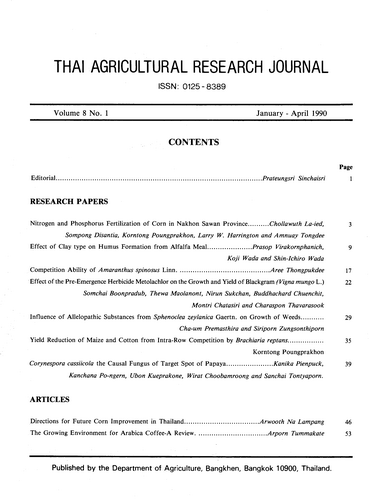Effect of Clay Type on Humus Formation from Alfalfa Meal
Abstract
A study was undertaken of the amount and nature of humic susbstances formed from alfalfa meal added to three soils with different major clay mineral contents, under short term incubation. Soil samples from the B horizon of a Hapludult (halloysite and vermiculite) Ap, a Paleustult (kaolinite) Ap and a Dystrandept (allophane and imorgolite) were incubated in pertridishes after the addition of alfalfa meal (3 and 5 g/100 g) for 30 days.
The total carbon content of the soil increased withthe higher level of added alfalfa meal. There was an initial rapid deline in total carbon content but htis alowed after 10 days. The retention rate of added carbon was higher in the Dystrandept (74 and 76%) than in iether the Hapludult (35 and 45%) and Paleustult (39 and 43%). The C/N ratio of humus formed from teh alfalfa meal was estimated to be more than 7.0. There was little extractable humus and that already present were more similar in nature for the Hapludult than the Paleustult and Dystrandept. The results were interpreted in terms of fidderences in their major clay mineral species.
Downloads
Published
How to Cite
Issue
Section
License

This work is licensed under a Creative Commons Attribution-NonCommercial-NoDerivatives 4.0 International License.
Thai Agricultural Research Journal



